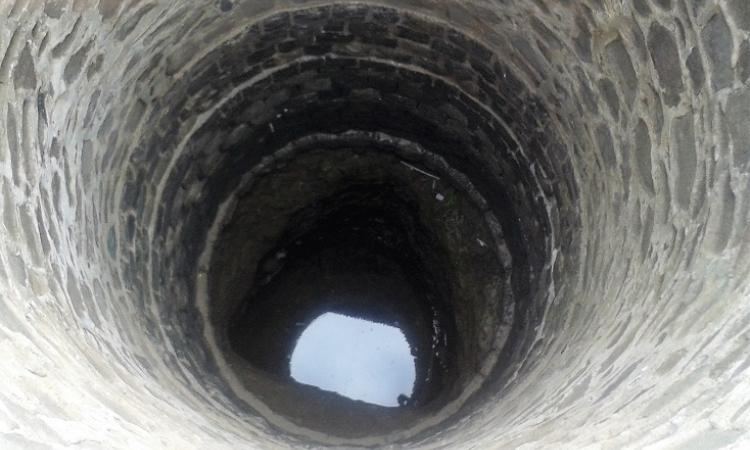
The state of Tamil Nadu depends heavily on groundwater for domestic, industrial, and agricultural use and this has led to rapid depletion of groundwater resources in the state. Over-extraction in hard, arid rock areas like the districts of Dharmapuri and the alluvial Cauvery delta is very high and farmers continue to drill deeper wells.
Modelling and divining, two different ways of finding groundwater
Exploring ways for sustainable management of groundwater is high on policy agenda, but lack of availability of reliable and adequate data makes prediction of groundwater availability full of maneuvering between knowns and unknowns.
While modelling is useful to understand groundwater systems and guide decisions on groundwater governance and management at the policy level, farmers and water users on the other hand still use methods such as divining to find out about groundwater availability and well location informs this paper titled 'From divine to design: Unearthing groundwater practices in Tamil Nadu, India' published in Water Alternatives.
This paper traces the pathways in which two totally different ways of understanding and detecting water below the ground, one being the scientific and the other water divining arrive at a decision to identify suitable sites for digging borewells. This paper tries to understand groundwater modelling and ties it to ethnographic work with water diviners.
Groundwater divining is common in both Dharmapuri and Cauvery delta and as high as over 90 percent of well owners in both Dharmapuri and deltaic Peravurani have been using diviners for generations to determine where and how deep to dig or drill borewells. And there could be many such groundwater diviners taking into consideration the over 12,000 panchayats (local government councils) in the state, each consisting of various villages which together have over 1.5 million working (open and tube) wells, argues the paper.
Diviners and their skills continue to be unacknowledged by scientists
While the presence of these diviner found wells are included in the development of groundwater models and aquifer management plans, diviners are rarely acknowledged in engineering and hydrogeologist expert circles. Both ways of finding groundwater do not yield results in some cases, but divining or dowsing continues to be ignored as a skill because of the incompatability of scientific knowledge with water divining knowledge.
Inspite of numerous attempts, science fails to understand divining and divining or dowsing can be said to be a way of knowing groundwater that exceeds science. The paper argues that such knowledge is valuable though and may yield new understandings about what water is, or about how to be with water that can be insightful for addressing existing concerns related to water security. The paper thus makes an attempt to treat the stories of the diviners and reflections on modelling in a symmetrical way.
The analysis finds that:
Special skills are required for both modelling and divining or dowsing
Both modellers as well as diviners rely on local environmental information, mobilise different equipment and tools and rely on tabulated data or collected information to arrive at a decision. Both hope to understand groundwater and aim to forecast where and how it flows, but do so through different ways of knowing that are invisibly but intimately entangled. For both modelling and dowsing, special skills are required that are learned over a long time, and in both cases, commitment and reiteration are important.
Both require years of education and training, and both modellers and dowsers take pride in being meticulous and insist on the need for repetition and fine-tuning to perfect their skills that can include mathematically representing aquifers or magnetically sensing groundwater flows.
Thoughtfulness
Both type of skills be it modelling or divining or dowsing require scientists and diviners to mobilise their expertise to help solve the water problems of local people in rural India. Without being overly emotionally engaged, both display a kind of practical care, consisting of efforts to be "contributing to restoring, sustaining, or improving something" by meticulousness tracing one’s steps to optimise prediction. Both involve sensibly and creatively using available material, equipment, and information to arrive at a result.
Tools and trials
The scientific perspective connects laptops, codes, calibration, geo-hydrological education, mathematical modelling, scientists, maps, and databases to help in (ground)water abstractions and monitor observation wells. The second ties together neem sticks, poojas, tracing footsteps, self-taught sensitivity, magnetic sensing, diviners, overgrown fields, and almanacs to groundwater flows and wells. However, knowledge produced within one network cannot be explained by the methods, devices, and rationalities of the other. Both ways of knowing are however, local and useful.
Talent and training
Both have to undergo long periods of training, but it is also the knack for maths or special skills or natural endowment such as the magnetic ability to find groundwater that makes some people suitable for modelling or divining. However, importance continues to be given to developing people’s mathematical abilities than in their magnetic sensitivity, which is often dismissed, ignored, ridiculed, or even criminalised in the water sector.
Divining or dousing: A different way of knowing
Acknowledging these similarities can help treat divining or dowsing more seriously as a different way of knowing – one that has its own logic and place in water governance. It is important to acknowledge that both ways of knowing are established and celebrated in specific networks and can greatly help in understanding groundwater.
"So, does dowsing or divining as a 'beyond scientific' form of knowing have something to offer when it comes to sustainable groundwater governance? The ways in which a water diviner practises care – seeks to improve farmer livelihoods, gets compensated, and senses the right place for a well suggests that this may be so", argues the paper. (Source: Verzijl, A.; Vivek M.; Prayag, A.; Srinivasan, V.; Domínguez-Guzmán, C. and Zwarteveen, M. 2023. From divine to design: Unearthing groundwater practices in Tamil Nadu, India.Water Alternatives 16(1), p 1.)
/articles/science-beyond-science-govern-groundwater-sustainably